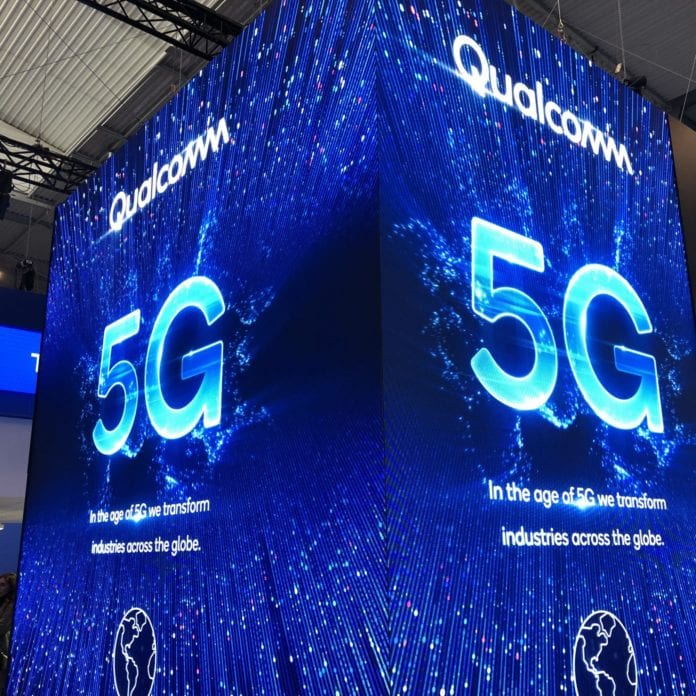Not including Snapdragon Ride, Qualcomm automotive design win pipeline tops $7 billion
Qualcomm CEO Steve Mollenkopf, discussing Q1 2020 earnings on a Feb. 5 conference call, touted the company’s near- and long-term view of 5G adoption in not just handsets but also in IoT, automotive, always-connected PCs and cloud-based artificial intelligence.
“Our business reached a key inflection point exiting fiscal Q1,” Mollenkopf said, “demonstrating the positive financial impact of our 5G strategy to grow our addressable dollar per device with higher performing core chipsets and new RF front-end content. Virtually all of our 5G Snapdragon design wins are using our RF front-end solutions for 5G sub-6 [GHz] and/or millimeter wave.”
The executive added that more than 45 device OEMs have launched or announced 5G devices and the company tallies some 275 5G devices announced or in development across price tiers. In China, for instance, Mollenkopf said there are 5G devices priced as low as $285. “At this point, 5G can address approximately 40% of domestic China smartphone sales.”
In addition to updating its 5G portfolio with the flagship Snapdragon 865 mobile platform and the Snapdragon 765 and 765G, both of which feature integrated 5G modems with the latter also including a graphics processing boost for gaming, Qualcomm recently announced new LTE platforms tailored for the Indian market.
“Our product offerings will help make 5G more accessible to consumers,” Mollenkopf said. The new LTE products “enable our partners to offer sophisticated solutions that meet global 4G demand, particularly in emerging economies across multiple tiers and price segments.”
Mollenkopf called out Korea as a “leading indicator for the pace of 5G adoption.” The three carriers in that country reported a combined 4.7 million 5G subscribers and are forecasting growth throughout 2020. “Of note,” he said, “the expected 5G subscriber growth is not just isolated to the sub-6 frequency bands. Carriers are planning millimeter wave service in 2020.”
On the millimeter wave front, Mollenkopf mentioned Verizon’s deployment of high-band frequencies in 31 markets and said that, “Looking forward, we continue to expect millimeter wave to be deployed in all regions.” He said approximately 345 operators in more than 120 countries are investing in 5G, including 45 commercial launches in 20 countries.
The automotive business has a “design win pipeline” valued at more than $7 billion, up from $5.5 billion a year ago; this includes solutions are telemetry, in-vehicle connectivity and infotainment, not the newly announced Snapdragon Ride autonomous vehicle platform. Debuted at CES, Snapdragon Ride features an ADAS Application Processor that support Level1/2 “active safety.” The Autonomous Driving Accelerator chip uses AI to support more advanced “self-driving” functionality.
“We have now become a trusted advisor to many of the world’s leading automakers,” Mollenkopf said, noting that Snapdragon Ride expands Qualcomm’s total addressable automotive market. He expects Snapdragon Ride-equipped vehicles on the road in 2023.
Right now the focus of 5G deployments is on providing enhanced mobile broadband to consumers. Further enhancements in the works for 3GPP Releases 16 and 17 will open up new opportunities around low-latency, reliability and massive support for the internet of things.
“Our 5G roadmap extends beyond Release 17, placing us on the cusp of a multi-decade mobile transformation as 5G increasingly becomes the foundation for the digital transformation of industries beyond smartphones,” Mollenkopf said.
Click here for a full look at Qualcomm’s Q1 2020 financials.

